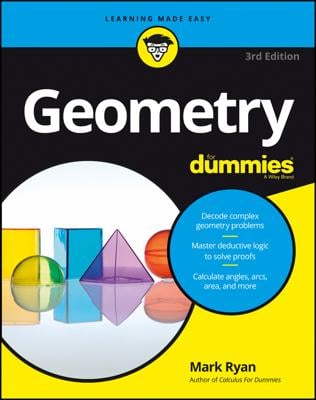Triangles are classified according to the length of their sides or the measure of their angles. These classifications come in threes, just like the sides and angles themselves. That is, a triangle has three sides, and three terms describe triangles based on their sides; a triangle also has three angles, and three classifications of triangles are based on their angles. The following are triangle classifications based on sides:
- Scalene triangle: A triangle with no congruent sides
- Isosceles triangle: A triangle with at least two congruent sides
- Equilateral triangle: A triangle with three congruent sides
Because an equilateral triangle is also isosceles, all triangles are either scalene or isosceles. But when people call a triangle isosceles, they're usually referring to a triangle with only two equal sides, because if the triangle had three equal sides, they'd call it equilateral. However, you can't always assume this when you're doing tricky geometry homework.
Scalene triangles
In addition to having three unequal sides, scalene triangles have three unequal angles. The shortest side is across from the smallest angle, the middle-length side is across from the mid-sized angle, and — surprise, surprise — the longest side is across from the largest angle.
The ratio of sides doesn't equal the ratio of angles. Don't assume that if one side of a triangle is, say, twice as long as another side that the angles opposite those sides are also in a 2:1 ratio. The ratio of the sides may be close to the ratio of the angles, but, for a scalene triangle, these ratios are never exactly equal.
Isosceles triangles
An isosceles triangle has two equal sides and two equal angles. The equal sides are called legs, and the third side is the base. The two angles touching the base (which are congruent, or equal) are called base angles. The angle between the two legs is called the vertex angle.
Equilateral triangles
An equilateral triangle has three equal sides and three equal angles (which are each 60°). Its equal angles make it equiangular as well as equilateral. You don't often hear the expression equiangular triangle, however, because the only triangle that's equiangular is the equilateral triangle, and everyone calls this triangle equilateral. (With quadrilaterals and other polygons, however, you need both terms, because an equiangular figure, such as a rectangle, can have sides of different lengths, and an equilateral figure, such as a rhombus, can have angles of different sizes.)
If you cut an equilateral triangle in half right down the middle, you get two 30°- 60°- 90° right triangles, which figure very heavily in geometry and trigonometry work.

